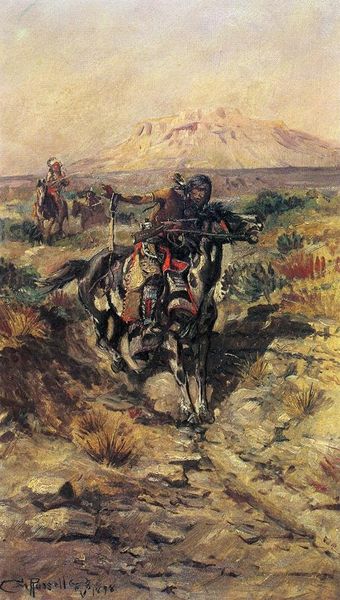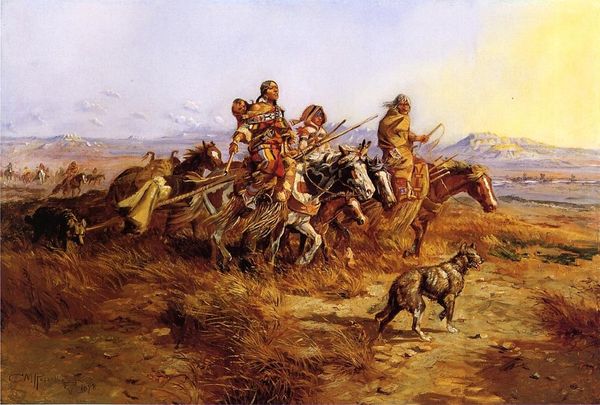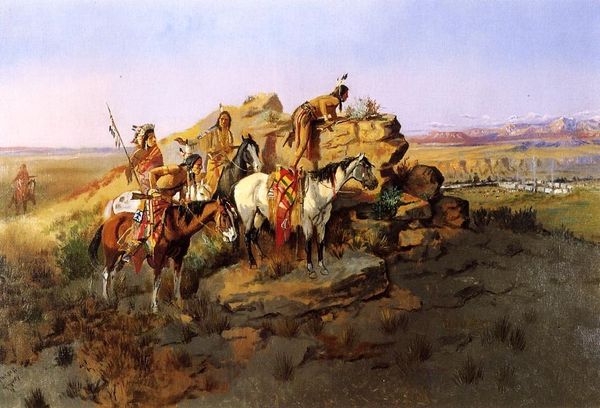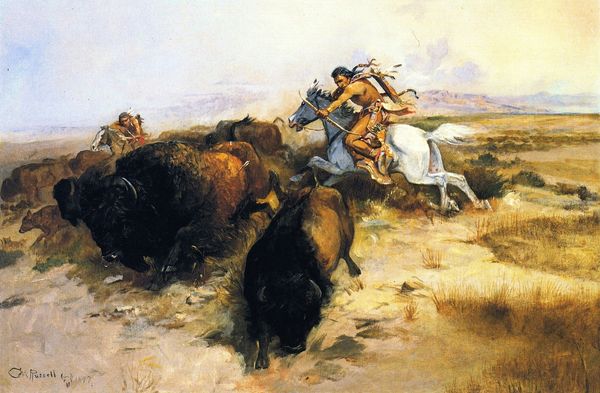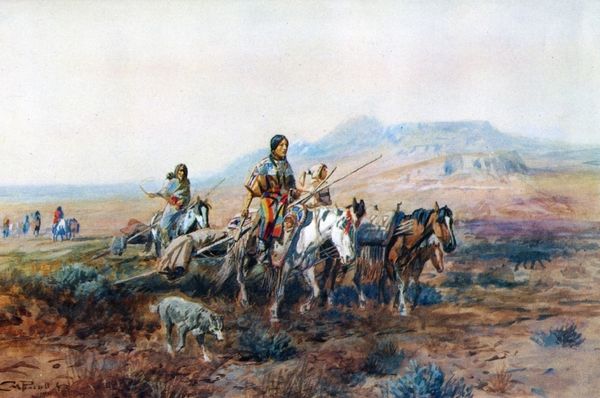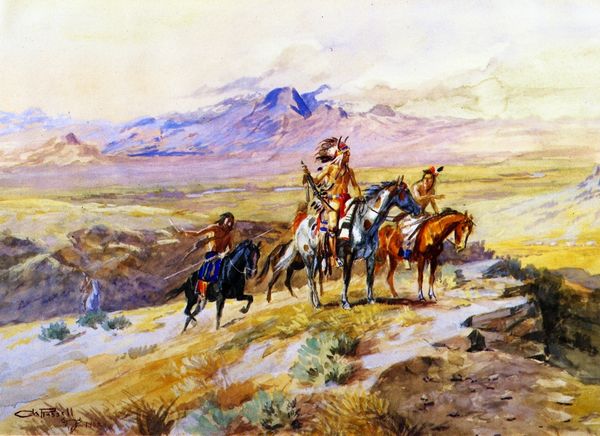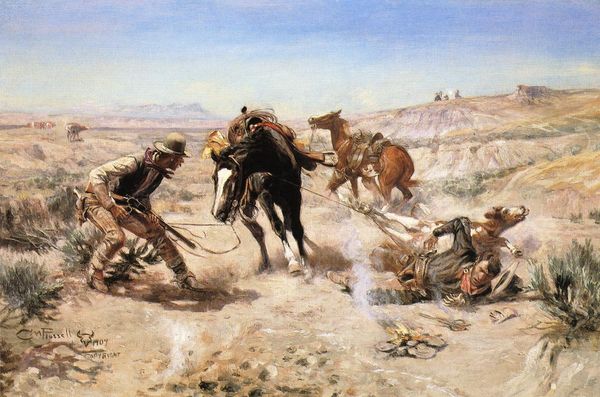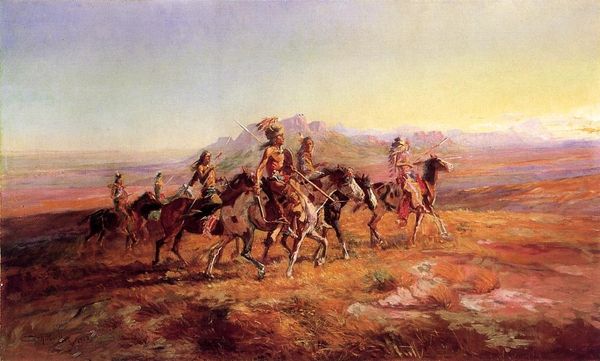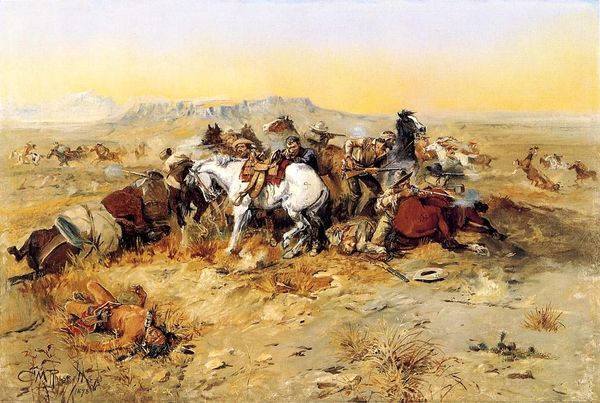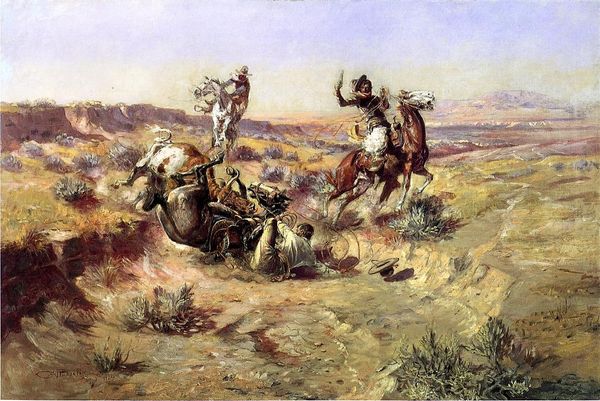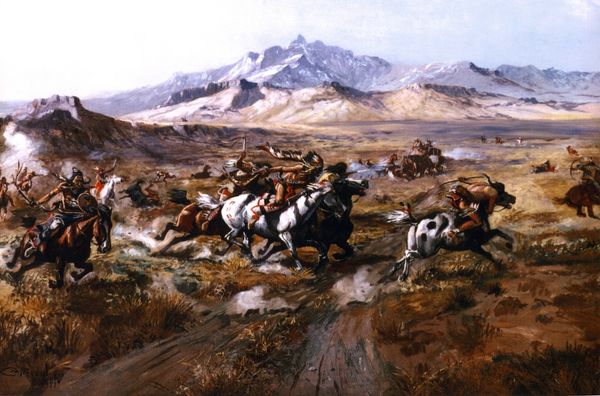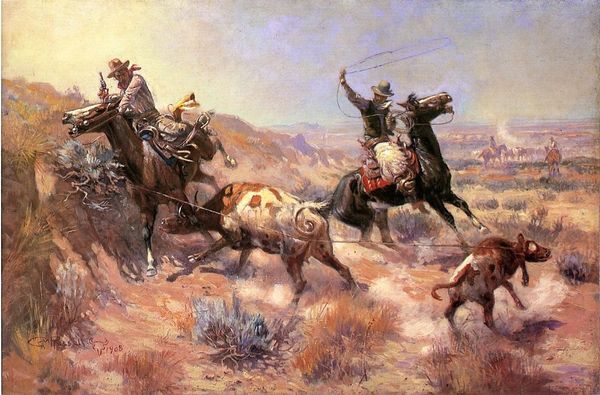
painting, oil-paint
#
portrait
#
animal
#
fantasy art
#
painting
#
oil-paint
#
landscape
#
impressionist landscape
#
figuration
#
mountain
#
horse
#
genre-painting
#
realism
Copyright: Public domain
Curator: Ah, "Capturing the Grizzly" by Charles M. Russell, painted in 1901 using oil on canvas. Quite a dynamic piece! Editor: Yes, it really is! The frantic energy of the chase is almost palpable. What jumps out to me is the dynamism created by the figures against the relatively static landscape, and the detail given to the central cowboy contrasted to the blurs around him. What’s your perspective on the work? Curator: Well, consider the context. Oil paint, itself a product of industrial processes, allows Russell to create this vivid narrative of man versus nature. But what’s truly interesting is how it romanticizes a form of labor – hunting – that was rapidly changing due to industrialization and resource extraction. Notice how the mountains, supposedly "natural", serve almost as a painted backdrop, a stage for this dramatized struggle. How does that juxtaposition resonate with you? Editor: I hadn’t really thought about it that way. So, the painting isn’t just about depicting the Wild West, but also about commenting on the transformation of the West by the extraction industries beginning to flourish at that time, and how hunting might represent older ways of life now endangered? Curator: Exactly. And consider the raw materials themselves. The canvas, the pigments…they all have their own stories, tracing back to resource extraction, trade networks, and even colonial histories. Russell isn't just creating a picture; he's assembling a complex network of materials laden with socioeconomic significance. This invites us to look at paintings in a whole new light. Editor: That’s fascinating. It’s made me realize there’s so much more to consider beyond just the surface image and its representational value! I will be sure to never look at a work without consideration for how it was made and where its component parts come from! Curator: Precisely. Thinking materially opens up a whole new avenue for understanding artistic intentions.
Comments
No comments
Be the first to comment and join the conversation on the ultimate creative platform.
